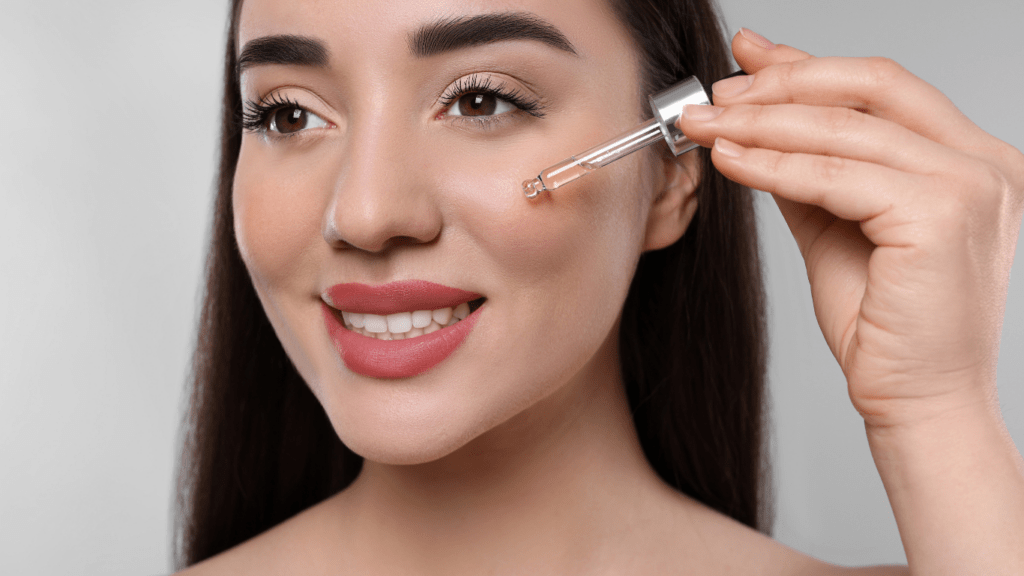Benefits of Using Organic Facial Oils
Organic facial oils offer multiple skin benefits. First, they hydrate deeply, providing long-lasting moisture thanks to essential fatty acids. These acids, including omega-3, -6, and -9, improve skin elasticity and softness. Second, they contain antioxidants like vitamins A, C, and E, which protect against free radicals and reduce signs of aging such as wrinkles and fine lines.
Another advantage is their compatibility with various skin types. Whether you have dry, oily, or combination skin, organic oils balance natural sebum production. Jojoba oil, for example, mimics the skin’s natural oils, making it ideal for oily skin. For dry skin, argan oil offers intense hydration and nourishment.
Additionally, organic facial oils can soothe inflammation and irritation. Ingredients like chamomile and calendula have anti-inflammatory properties, reducing redness and calming sensitive skin. This makes them suitable for those with conditions like eczema and rosacea.
Lastly, organic facial oils are free from harmful chemicals. Conventional skincare often includes synthetic fragrances, parabens, and sulfates that can irritate the skin. Choosing organic products ensures you avoid these potential irritants, promoting healthier skin naturally.
Key Ingredients to Look For
Knowing the right ingredients makes a significant difference when choosing organic facial oils. These components ensure the oil nourishes and hydrates effectively.
Essential Fatty Acids
Essential fatty acids, such as omega-3 and omega-6, provide deep hydration and help restore the skin’s lipid barrier. Look for oils containing linoleic acid, found in rosehip and evening primrose oils. These fatty acids increase moisture levels and improve skin elasticity.
Vitamins and Antioxidants
Vitamins and antioxidants protect and rejuvenate the skin. Vitamin A, found in rosehip oil, promotes cell turnover and reduces fine lines. Vitamin C, present in seabuckthorn oil, brightens the skin and boosts collagen production. Vitamin E, abundant in argan oil, combats free radicals and prevents oxidative stress.
Top Organic Facial Oils for Healthy Skin

Organic facial oils are key elements in achieving glowing, hydrated skin naturally. Each oil offers unique benefits that cater to different skin needs.
Argan Oil
Argan oil is rich in vitamin E, essential fatty acids, and antioxidants. It deeply hydrates, reduces fine lines, and improves skin elasticity. I find it ideal for combating dryness and restoring a youthful glow. Its non-greasy texture makes it suitable for both oily and dry skin.
Rosehip Oil
Rosehip oil contains a high concentration of vitamins A and C, essential fatty acids, and antioxidants. It helps reduce scars, fine lines, and pigmentation. Whenever I need to brighten dull skin and promote cell turnover, I reach for rosehip oil. This oil is particularly beneficial for those with mature skin.
Jojoba Oil
Jojoba oil mimics the skin’s natural sebum, providing balanced hydration while regulating oil production. It’s packed with vitamins E and B, as well as essential minerals like:
- chromium
- copper
- zinc
I use jojoba oil to soothe inflammation and keep my skin calm, making it perfect for sensitive and acne-prone skin.
Marula Oil
Marula oil is loaded with antioxidants, vitamins C and E, and essential fatty acids like omega-9. It absorbs quickly without leaving a greasy residue, offering deep hydration and skin protection. I recommend marula oil for anyone looking to boost their skin’s natural barrier and combat aging signs.
Sea Buckthorn Oil
Sea buckthorn oil is renowned for its high vitamin C content, antioxidants, and omega-7 fatty acids. It improves skin elasticity and fights free radical damage. Whenever my skin needs a brightening boost and collagen enhancement, I rely on sea buckthorn oil. Suitable for all skin types, it adds a vibrant glow and promotes overall skin health.
How to Choose the Right Oil for Your Skin Type
Selecting the best organic facial oil depends on understanding your skin type and its unique needs. Here’s how to pick the right oil to achieve a healthy, hydrated glow.
Oily Skin
Focus on lightweight oils that balance sebum production. I recommend jojoba oil and grapeseed oil. Jojoba oil closely resembles your skin’s natural sebum, preventing overproduction. Grapeseed oil offers linoleic acid, which is typically lower in oily skin types, helping regulate oil levels.
Dry Skin
Opt for rich, deeply hydrating oils. Argan oil, known for its vitamin E content, provides intense hydration and improves skin elasticity. Avocado oil, packed with fatty acids and vitamins, deeply nourishes and repairs dry, flaky skin. Both oils continually deliver moisture throughout the day.
Sensitive Skin
Stick to soothing, non-irritating oils. Chamomile oil calms redness and irritation due to its anti-inflammatory properties. Calendula oil promotes healing with its gentle, hydrating effects. If you use these oils, they’ll provide comfort and reduce sensitivity without causing breakouts.
Application Tips for Maximum Benefits
Applying organic facial oils correctly maximizes their benefits. Before application, cleanse your face thoroughly to remove dirt and makeup, ensuring the oils penetrate deeply. For best results, dry skin gently with a clean towel after cleansing.
Step-by-step Application
- Dispense Oil: Use a dropper or pump to dispense 2-3 drops of oil onto your fingertips. Adjust the quantity based on your skin’s needs.
- Warm the Oil: Rub the oil between your palms to warm it. This activates the oil, enhancing its absorption.
- Apply and Massage: Gently press your palms against your face, starting from the center and moving outward. Use an upward, circular motion to massage the oil, focusing on dry or uneven areas.
- Allow Absorption: Let the oil absorb for a few minutes before applying other products. This ensures it penetrates the skin and delivers its nutrients effectively.
Timing and Frequency
Timing is crucial for application. Apply the oil in the morning to protect your skin from environmental damage and in the evening to help with overnight recovery. For most skin types, using the oil once or twice daily works well. However, if your skin feels too oily, reduce the frequency to once daily or every other day.
Layering with Other Products
Layering is essential for an effective skincare regimen. Apply organic facial oils after water-based products like serums and before heavier creams or sunscreens. Ensure the previous product is fully absorbed before adding the oil to prevent clogged pores and maximize the benefits of each product.
Storage Tips
Store your facial oils in a cool, dark place to preserve their potency. Exposure to light and heat can degrade the oil’s quality. Use the oils within six months to a year, depending on the oil’s shelf life, to ensure they remain effective.
Proper application enhances the benefits of organic facial oils, ensuring your skin stays healthy and hydrated.



